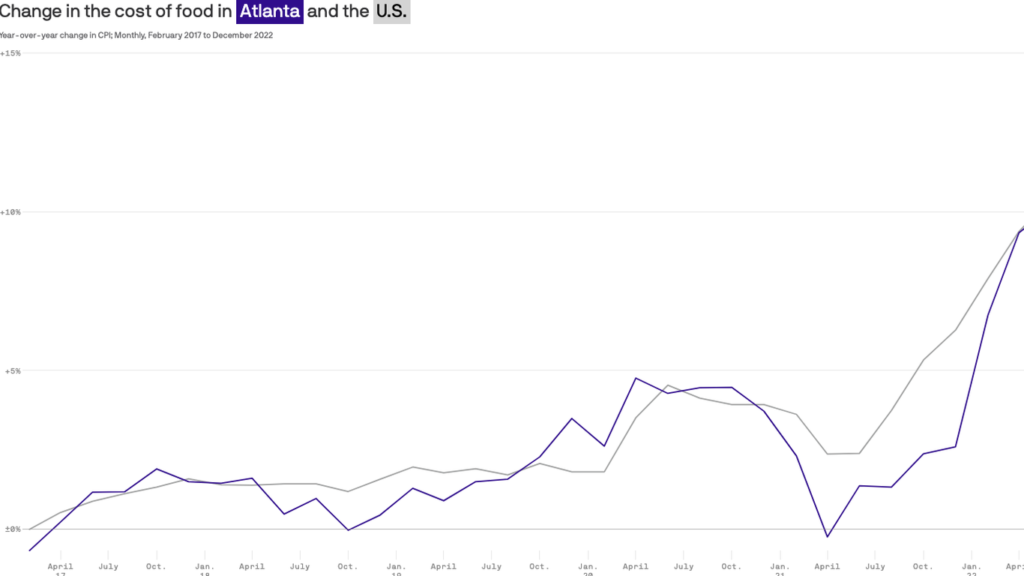Food prices across metro Atlanta were up 12.5% in December, according to a new analysis of the Bureau of Labor Statistics from Axios’ Kavya Beheraj and Alex Fitzpatrick.
- The cost of food eaten at home was up 14.6%, while the price of food eaten away from home was up 9.8%.
Why it matters: Grocery bills are one of the most powerful ways in which many Americans experience inflation.
- As the cost of eggs, milk and other staples rise, families living on the financial edge are left making difficult choices about what to buy — and what to skip.
- For restaurants and other businesses, higher food prices can leave owners with the difficult choice of swallowing the costs or passing them on to customers.
By the numbers: Nationwide, the cost of all foods was up 10.4% year-over-year in December, per the U.S. Bureau of Labor Statistics.
- The cost of food prepared at home was up 11.8%, while food eaten at restaurants was up 8.3%.
- Those are all down just slightly from recent highs set towards the end of 2022.
Driving the news: COVID-related supply chain disruptions, climate change and higher energy costs are just some of the factors contributing to higher food prices.
- Russia’s war in Ukraine, a major wheat producer, continues to affect the global supply — and thus price — of that key foodstuff.
- The Federal Trade Commission, meanwhile, is under increasing pressure from lawmakers and advocacy groups to investigate whether egg producers are manipulating prices.
The intrigue: Some businesses have noticed that while consumers may gripe about higher costs, they’re willing to pay up, as the New York Times recently reported — disincentivizing them from bringing prices back down to Earth.
The big picture: Rising food prices aren’t just changing the kinds of items that Americans are buying, as Axios’ Emily Peck recently reported — they’re forcing families to buy less food entirely.
- “People are starting to think about what they truly need — and what can…
Read the full article here





